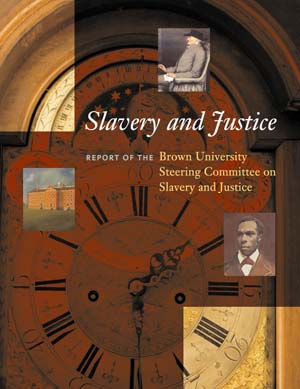Brown University's efforts to create a truly diverse and inclusive community are rooted in a commitment to preventing mistakes of the past that have muted the success of earlier diversity and inclusion initiatives. A vital resource for ensuring that Brown continues to pursue steady progress in confronting issues of racism, discrimination and inequity is the 2006 Report of the Brown University Steering Committee on Slavery and Justice.
In 2003, President Ruth Simmons appointed a committee that included faculty, undergraduate and graduate students, and administrators to investigate the University’s historical relationship to slavery and the transatlantic slave trade. After devoting three years to the task, the committee issued a report detailing how some of Brown’s founders and benefactors participated in slavery and the transatlantic slave trade and the benefits the University derived from these activities. The report also recommended that Brown establish a Center of Slavery and Justice; create a slave trade memorial; support educational engagements with the local community; and “maintain high ethical standards in regard to investments and gifts,” among other goals. On February 24, 2007, the Brown Corporation endorsed a set of initiatives proposed within the report.
Today, many of the report's recommendations have been realized, and many aspects of Brown's ongoing diversity and inclusion efforts have their basis in the principles, goals and aspirations articulated in the slavery and justice report. Brown is pursuing the report's "inquiry with integrity" approach to careful and substantial scholarship, with members of the campus community coming together via careful consideration of different views and ideas to provide thoughtful answers to problems facing our world.

